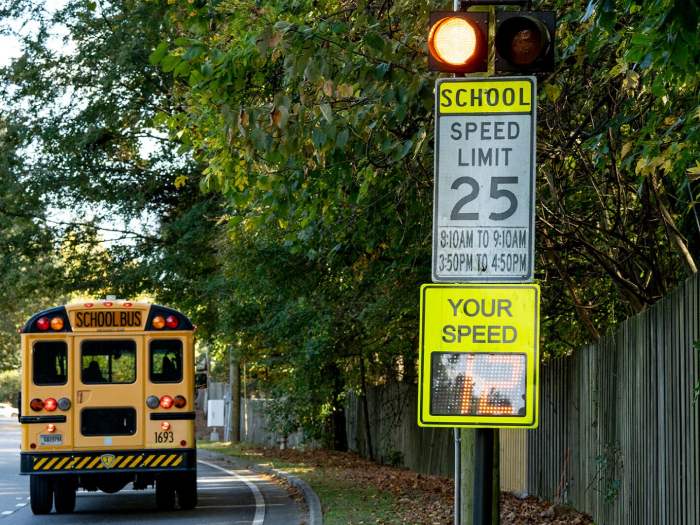Car2Xand C-V2X: technology to make roads safer
Connected smart cars that communicate with each other, with other road users and with infrastructure; it may sound like science fiction, but Audi is already making it reality – and the possibilities are even greater.
Audi isn’t just pursuing sustainable mobility with zero emissions, it’s also committed to developing ever-safer vehicles. One of the ways for meeting this objective is through Car2X and C-V2X technology, which enables a range of possibilities for communicating in connected traffic.
Car2X technology works thanks to SIM cards integrated into vehicles. These can send and receive information to and from other vehicles and road infrastructure, such as traffic light control centers. The communication takes place in near-real time: the car identifies itself within the network with its own unique token, the data flows anonymously and is stored for only a short period of time.
What is C-V2X?
The C-V2X protocol is a relatively new evolution of Car2X and takes advantage of 4G/5G mobile communications standards.
The abbreviation stands for Cellular-Vehicle-to-X. The “X” can stand for various road users, traffic features, or other vehicles and can include traffic lights, crosswalks, road signs, school buses, constructions workers and more.
The C-V2X protocol transmits data directly to and from the vehicle without having to travel over the cellular network.
Preventing hazards
The display in the cockpit uses the information gathered to tell drivers when they need to adapt their driving style to a new situation. This might include, for example, a stretch of frozen road, an accident or a construction site hidden behind a bend. This enables drivers to prepare for potential hazards and react appropriately.
“Car2X technology has the potential to further reduce the number of serious accidents and traffic fatalities,” explains Andre Seeck, Head of the Vehicle Technology Department at the German Federal Highway Research Institute. Experts at the ADAC - the German Automobile Club - are even calling for this technology to soon become standard in all vehicles in the country.
Protecting school pupils

Each year around 100 schoolchildren are killed in traffic accidents in the United States, and around 25,000 are injured. This is one of the reasons why Audi wants to improve the safety of the most vulnerable street users.
It is currently testing communication between Audi vehicles and school buses in Georgia, as well as with the warning signs that are commonly found in front of schools in the US. Using C-V2X, the signs become beacons that provide alerts to approaching drivers when they are about to enter school zones during school hours and warn them if they are above the speed limit. School buses will also warn approaching vehicles when students are boarding or exiting the bus.
Global projects

Another Audi initiative is also taking place in the US, this time in Virginia, testing a safety vest for construction workers equipped with C-V2X technology. The Ingolstadt brand is collaborating with the Virginia Department of Transportation and the Virginia Tech Transportation Institute on the project.
The vest sends warning signals to drivers approaching the construction site − and informs the construction workers about oncoming vehicles. This makes traffic twice as safe. This project, as well as the project to make school zones safer, can be replicated globally, as Anupam Malhotra, Head of Connected Services at Audi of America, explains: “As we need the right infrastructure, we’re also exploring how private investors can get involved when it comes to implementing the new technology. The goal is that these safety improvements should come with no additional service costs for our customers”.
Lowering stress levels and protecting data
Traffic light information services improve driving behaviour at street intersections and lower driver stress levels. “Normally, amber traffic lights, for example, put drivers in a dilemma: should they drive through or brake? With the traffic light information and the countdown to the red light, it is much easier for them to make the right decision,” adds Malhotra, before going on to discuss data protection. “For Audi, data protection has top priority. A good example is networked traffic lights. As soon as a connected car enters an urban area with such traffic lights, the Car-2X system assigns it a token which is only valid in the city in question. It is therefore not possible to identify the license plate number or vehicle owner”.
The future of Car2X
Car2X technology will continue to be extended to other vehicles and users. It could, for example, be built into e-bike frames to warn cyclists of approaching cars. And once the software takes up less space and power, pedestrians will also be able to use C-V2X communication via their smartphones.
Another potential scenario could see vehicle manufacturers integrating it with vehicles’ driver assistance system. For example, the brake system could prevent someone from crossing a red traffic light. Car2X could also reduce traffic jams and improve parking by suggesting alternative routes and directing cars to free spaces.
Source: AUDI AG
